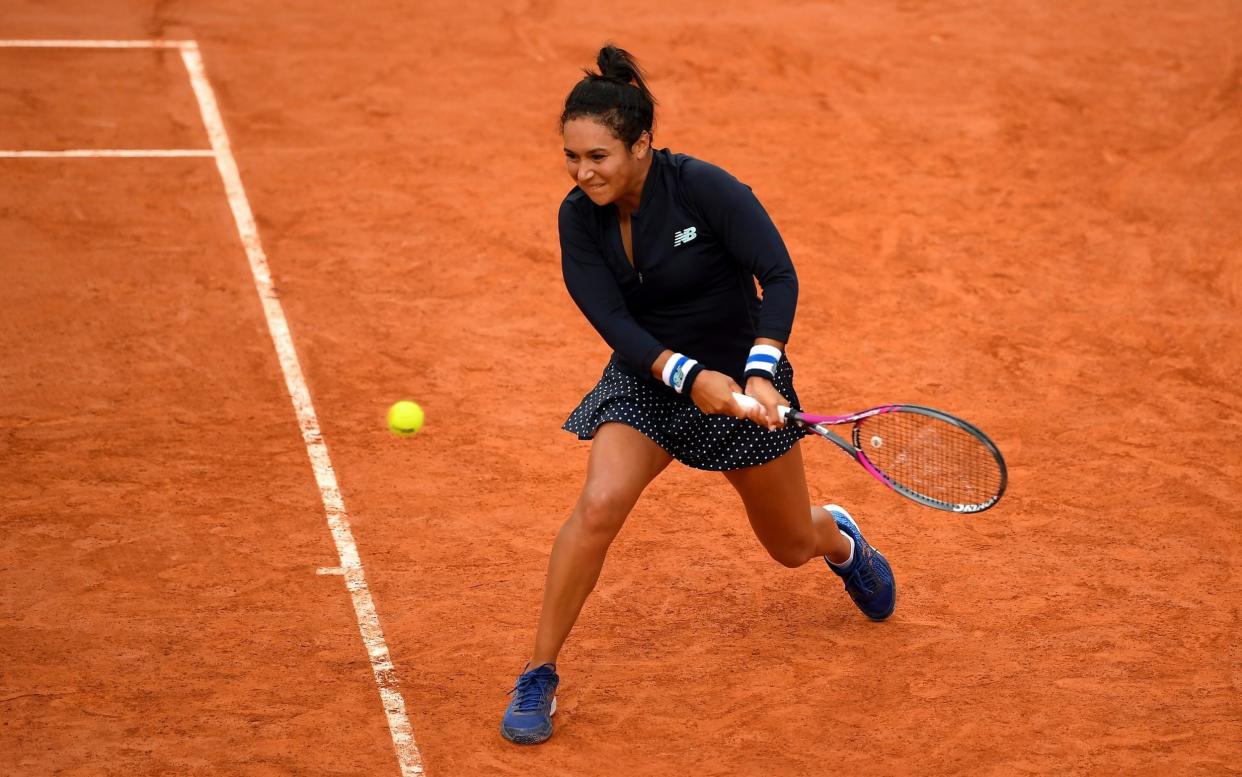Heather Watson delivers scathing assessment of next generation of British talent after first round defeat

British tennis was bagelled on Tuesday – to borrow the popular nickname for a 6-0 set – as Heather Watson became the sixth and final player to lose in the first round of the French Open. Here was a bleak full-house to match Paris’s autumnal mood.
This was the first time in seven years – since the 2013 French Open, in fact – that Great Britain had failed to score a singles victory at a major tournament. And the next wipeout may not be so far away. In a scathing assessment of the next generation, Watson questioned where the successors to Andy Murray and Johanna Konta are coming from.
“Jo [Konta] is 29,” said Watson. “I'm 28. Evo [Dan Evans] is 30. [Cameron] Norrie is young. Apart from that, I don't really see who's next. I don't see who's going to be top 50.”
In the past, Watson has been critical of British wannabes, asking whether they worked hard enough. Now it seems that her pessimism has only increased. During the post-match video conference after her 7-6, 6-4 loss to France’s up-and-coming Fiona Ferro, she was asked if she still felt the same way about younger players. She shrugged her shoulders. “What younger players? I don't have anyone to talk about.”
It does seem remarkable that the Wimbledon surplus has fed a quarter-of-a-billion pounds into the Lawn Tennis Association’s coffers since that last French Open disaster in 2013. And yet the development structure still offers zero track record of producing top-100 players.
Under Scott Lloyd – who became chief executive at the start of 2018 – the LTA has invested in two National Academies, located in Loughborough and Stirling. Based at university facilities, each of these ambitious programmes services around ten students covering the ages of 13 to 16.
Heavily centralised systems have been tried before in Britain and they have many flaws. The selection of an elite group of players at an early age – often pre-puberty – involves an almost impossible act of crystal-ball gazing.
Those rejected can become demoralised and may abandon the sport altogether. Those selected are liable to become complacent, or over-confident. Much resentment accumulates within the small family of British tennis, and if the two groups come together at a tournament, the chosen ones suddenly find that they have an invisible target on their backs.
National Academies have arguably produced benefits in other sports, and the last LTA performance director – Simon Timson – saw expensive “world-class facilities” as the best way to transform the LTA’s shabby reputation. This doesn’t explain why countries with no centralised tennis programme – Serbia, for instance – continue to churn out world-class talent.
Watson was expressly critical of the LTA’s early selection policy. “You don't know who's going to make it,” she said. “It's not just the talented people that get through. You should give the hard workers an opportunity, too.
“There needs to be a bigger pool of supported players,” Watson added. “That way you're not spoiled and not given everything at a young age. You need to work for it, learn the grind and the hard work of the tour, what it takes. It would give more people the opportunity.”
Watson could hardly have spoken more sense. At the end of the video call, she was asked whether she might consider changing her tennis dress for a tracksuit – or even an office outfit – when she finishes her career, and working behind the scenes to improve the British game? Her answer was unequivocal. “I definitely wouldn't want to get involved because of the politics. There's loads of politics involved. If I'm honest, I don't think my voice would be heard anyway.”
At the LTA’s Roehampton offices, Lloyd is about to welcome a new performance director. Michael Bourne’s cv is almost identical to that of his predecessor, Timson, who left in the summer to take up the performance director’s job at Manchester City FC.
Where Timson came to the LTA via bobsleigh, cricket and UK Sport, Bourne’s track record involves rifle shooting, cricket and UK Sport. His appointment continues a trend dating back almost a decade for the LTA to hire people from outside tennis, overlooking those who have seen the equivalent of the National Academies tried and discarded before. Those who cannot remember the past, they say, are doomed to repeat it.
Watson’s uncompromising verdict last night felt reminiscent of the scenes on the morning after Great Britain’s Davis Cup triumph in 2015. “I don’t know where the next generation are,” said Andy Murray that day, at a press conference that had been intended to celebrate victory over Belgium. Even team captain Leon Smith, now the LTA’s head of men’s tennis, admitted that “There’s been so much change [and] every time you change, you have to start again.”
Five years on, we are still waiting for the LTA and its vaunted development network to deliver.


